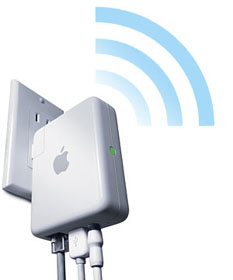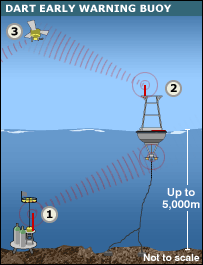The current expansion in world trade, particularly trade with China, is causing a rethink of the way goods are transported across the world's oceans.
Almost all goods traded worldwide travel by sea, and experts predict that trade will triple by the year 2020. This will require bigger ships, faster ships and greener ships.
Professor Chris Hodge, chairman of next year's World Maritime Technology Conference in London, explained the driving forces behind the search for new shipping technologies.
"Shipping is already huge. Perhaps 90% of the world's trade goes by sea and it's only going to increase," he said.
"Perhaps we'll see doubling of world shipping in our lifetime. The needs of the environment, the need to reduce manpower and costs, all present technological challenges."
Too bigThe world's largest container ship, the MSC Pamela, launched earlier this year. It carries 9,200 container boxes between China and Western Europe
Ships this big would have been unthinkable just a few years ago, according to David Tozer of the Lloyds Register, which keeps records of all merchant shipping
But ultra-large container ships are rapidly becoming the norm. By the year 2020, 30% of the world's shipping fleet will be too big to pass through the Panama Canal.
Mr Tozer predicted a maximum ship capacity of 12,500 boxes per ship. Beyond that, he said, even the biggest container ports would be unable to load and unload them.
But perhaps size is not everything. Transporting goods by container is cheap, around a dollar for a refrigerator, but slow at just 25km/hr.
At the moment, a European car ordered in the US could take up to 25 days to be delivered. This includes the time taken to cross the Atlantic and the time it takes to unload and distribute the cargo from today's giant container ships in port.
The naval architect Nigel Gee believes there is a gap in the market for an ocean-going courier service that fits somewhere between air freight and conventional shipping.
His patented Pentamaran design would be a much smaller craft, travelling much faster, so he predicts that the same car could be delivered to the same customer within a week.
Pentamarans would carry around 1,000 boxes at a maximum speed of around 85km/hr. They would achieve such speeds without vastly increasing fuel consumption thanks to a long, thin torpedo-shaped main hull. Such a design is naturally unstable in the water and requires side hulls to stop it sinking - in this case, four are used.
Its designers claim great interest among ship builders worldwide.
Electric shipsBut shipping is notoriously cost-conscious. As oil prices rise, so ships will need to find ways of minimising their fuel consumption.
In an anonymous-looking test hall in the heart of England where, back in the 1930s, Frank Whittle tested the concept of a jet engine to power aircraft, engineers are testing similar techniques to power ships.
In the absence of ocean, the All Electric Ship Demonstrator project needs no hull or rudder to show the benefits of propelling a ship electrically rather than mechanically.
The programme is jointly funded by the British and French defence ministries to test the operation of an advanced naval electric propulsion system before applying the technology to a warship.
A gas turbine produces electricity to drive the system's virtual propeller via a vastly shortened propeller shaft.
It goes like a rocket and yet handles like a dream, the propeller changing direction with the click of a computer mouse in the test facility's virtual bridge or control room.
That is just one of the features of the all-electric ship that makes it so appealing, according to Professor Chris Hodge, also a chief engineer with the marine engineering consultancy BMT.
"One of the biggest problems with a mechanical engine is it can't turn backwards very easily," he said.
"An electric motor really doesn't know which way it's turning, once it's started. It's much more flexible, much more versatile and because of all of that much cheaper to run."
Nigel Gee believes that in the short term, the all electric ship will be limited to certain shipping sectors that may change in the future.
"Cruise liners have an enormous demand for electricity for services to their passengers, be it heating, water for baths, cooking or entertainment.
"And these occur at certain times of the day. At other times of the day, when the passengers are all asleep, they need to propel the ship fast.
"If you produce a lot of electricity you can choose where you divert it to, for services or weaponry, depending on need.
"In the longer term, when the oil runs out, the all electric ship may play a wider role in shipping as, indeed, may nuclear power."
Source









